

Josh Nevett
CarExpert's top five large SUV reviews of 2025
2 Days Ago
The Mazda CX-5 has been relegated to second spot on the SUV sales charts lately, but in many areas it's still a cut above most competitors.
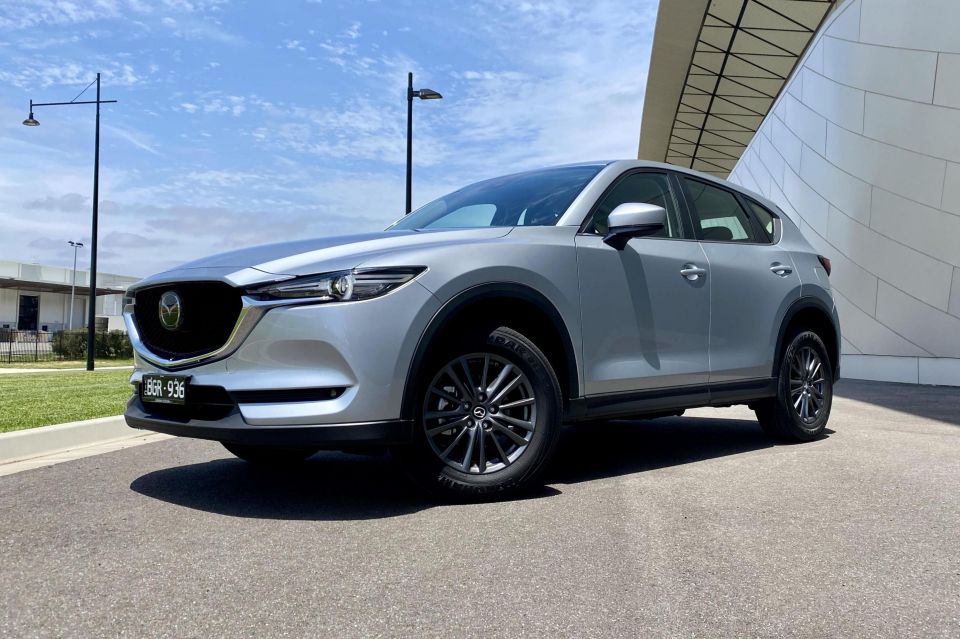


Senior Contributor
New from
$30,980
excl. on-roads

Senior Contributor
New from
$30,980
excl. on-roads


Senior Contributor
New from
$30,980
excl. on-roads

Senior Contributor
New from
$30,980
excl. on-roads
Quickly see how this car stacks up against its competition. Select any benchmark to see more details.
Where expert car reviews meet expert car buying – CarExpert gives you trusted advice, personalised service and real savings on your next new car.
The Mazda CX-5 has been overtaken as Australia’s top-selling medium SUV by the Toyota RAV4 over the course of 2020, but it’s still a hugely popular offering and easily the company’s highest-volume model.
We’ve yet to bring you a review of this vital car, which is why we’re publishing one now despite the lack of any recent updates of note to the vehicle itself.
Does it still offer the same compelling mix of handsome design, sharp driving dynamics, and useable cabin space that have made it such a sales superstar? Or has it been eclipsed by other, more recently upgraded contenders?

The CX-5 Maxx Sport tested here has a list price of $36,240 plus on-roads, but is currently quoted at $38,240 drive-away and sits one run above the Maxx (from $35,240 drive-away with an automatic).
From here the AWD-only CX-5 Touring kicks off at $43,740 drive-away, the GT starts at $48,985 drive-away, and the Akera can be had from $51,735 on the road. These flagship models have various engine choices at extra cost.
So what are the Maxx Sport’s main competitors? The mid-range Ford Escape ST-Line FWD was marketed at $38,490 at the time of writing, a base RAV4 GX will set you back $39,000 on the road, and a second-from-base Honda CR-V VTi is priced at $37,541 drive-away.
There are a vast array of other potential options to consider.
If you want maximum space-for-money, there are more affordable options like the Nissan X-Trail and Mitsubishi Outlander, if you want something a bit more rugged there’s the Subaru Forester, and if you want edgy design there’s a brand new Hyundai Tucson just around the corner.
Buy your new car without the stress. It's fast, simple and completely free.

Great service from Travis and team, second time I have used this business would not hesitate to recommend them to anyone
Craig C.
Purchased a Ford Ranger in Sunshine Coast, QLD
CarExpert helped Craig save thousands on his Ford Ranger, now let us save you on your next new car.
Find a dealAt the end of the day, the price you pay at the dealership will be dependent on a number of factors such as when you want to buy (is the dealership chasing sales?), the age of the model you’re purchasing (is a new generation model being launched soon) and of course your strength as a negotiator.
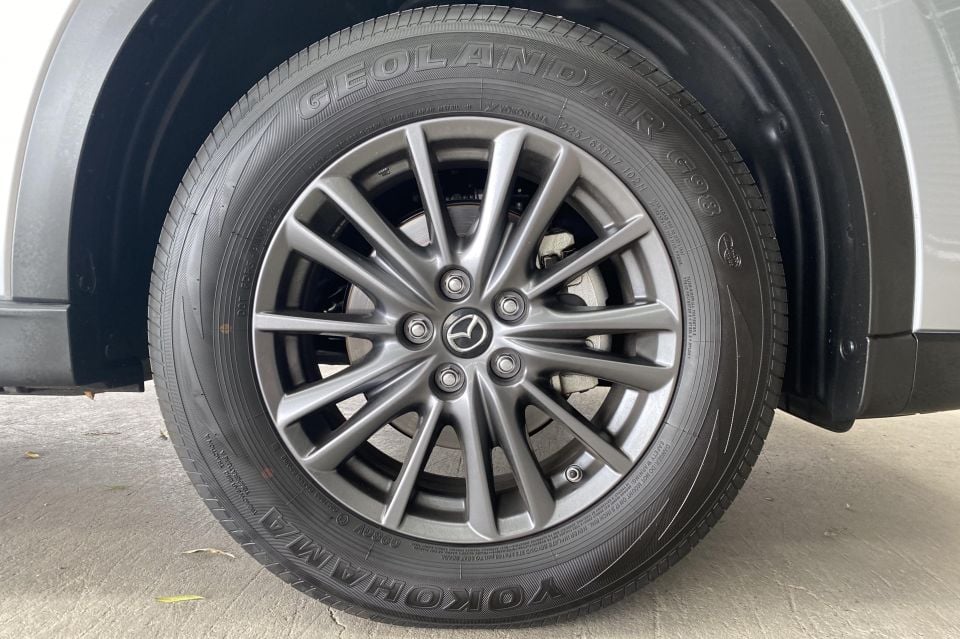
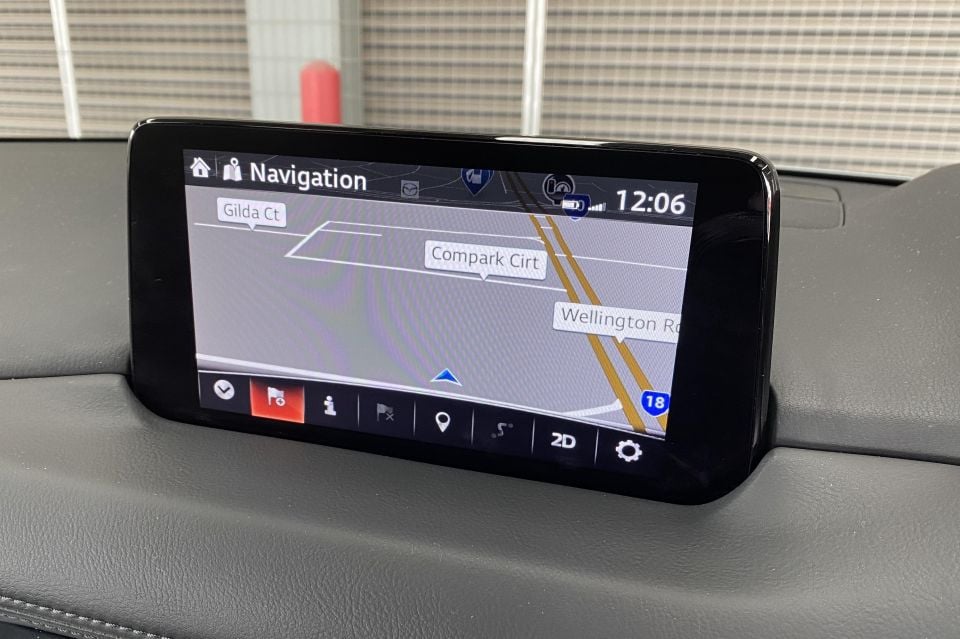
The base CX-5 Maxx comes with 17-inch steel wheels, LED headlights with dusk sensing and auto high-beam, rain-sensing wipers, cloth seats, a reversing camera, push-button start, six speakers, an 8.0-inch infotainment screen, Apple CarPlay and Android Auto, Bluetooth/USB, and digital radio.
Above this for an additional $3000 the Maxx Sport tested here adds alloy wheels, LED tail lights and fog lights, dual-zone climate control, an auto-dimming rear-view mirror, and inbuilt satellite-navigation. Seems worth it.
Just for context, the CX-5 Touring grade positioned one rung up gets you standard AWD and a more powerful base engine (which is optional for $3000 in Maxx Sport), heated side mirrors, a head-up display, faux leather seats, a proximity key, front paring sensors, and traffic-sign recognition.
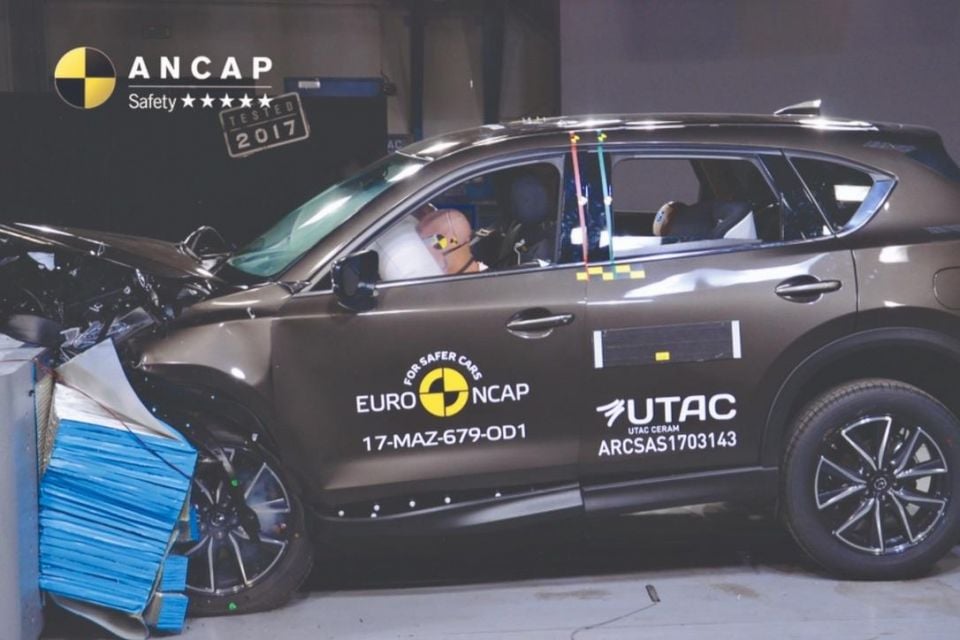
Passive safety features include dual front airbags, dual front thorax airbags, and dual full-length curtain airbags. The back seats have two ISOFIX and three top-tether points.
Active safety features include forward autonomous emergency braking and collision warning, lane-departure warning, blind-spot monitoring that lights up the side mirrors, rear cross-traffic alert, adaptive cruise control, and an active (steering) lane-keeping aid.
This lattermost system picked up most clearly marked lines but is quite reactive, and best thought of as a safety net.
The CX-5 also has a 2017-stampedfive-star ANCAP crash score – 95 per cent for adult protection, 80 per cent for child protection, 78 per cent for pedestrian protection, and 59 per cent for safety assist.
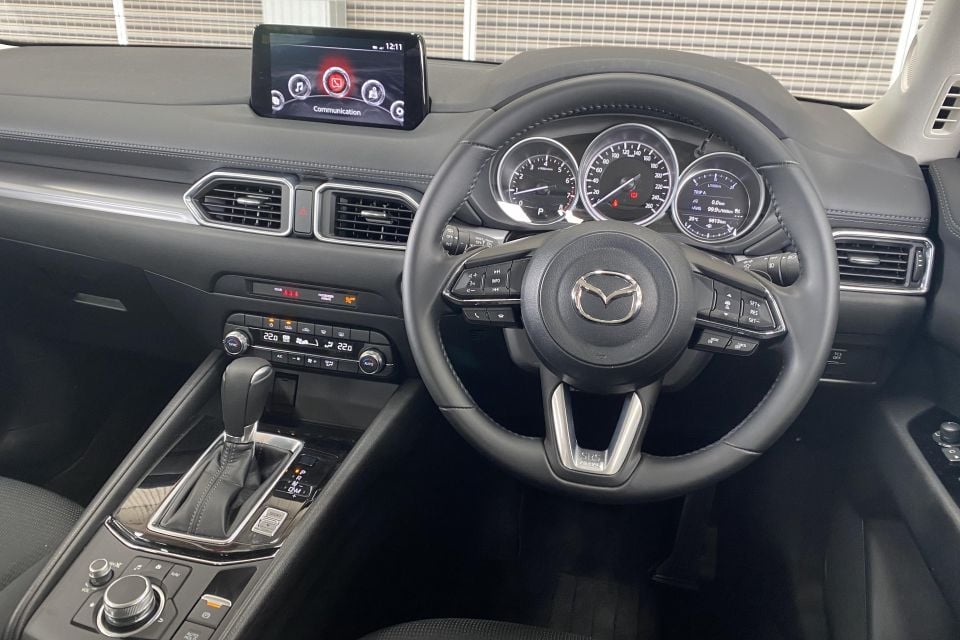
It’s a bit old hat having to pull the key fob from your pocket and press a button to unlock the Mazda, but maybe I’m being pedantic.
The manually adjustable fabric driver’s seat, and the nicely trimmed leather steering wheel, move up/down and fore/aft, so ergonomics shouldn’t be an issue.
Unfortunately there’s no digital speedo, but the analogue gauges are crystal clear, which goes some way to making up for it.
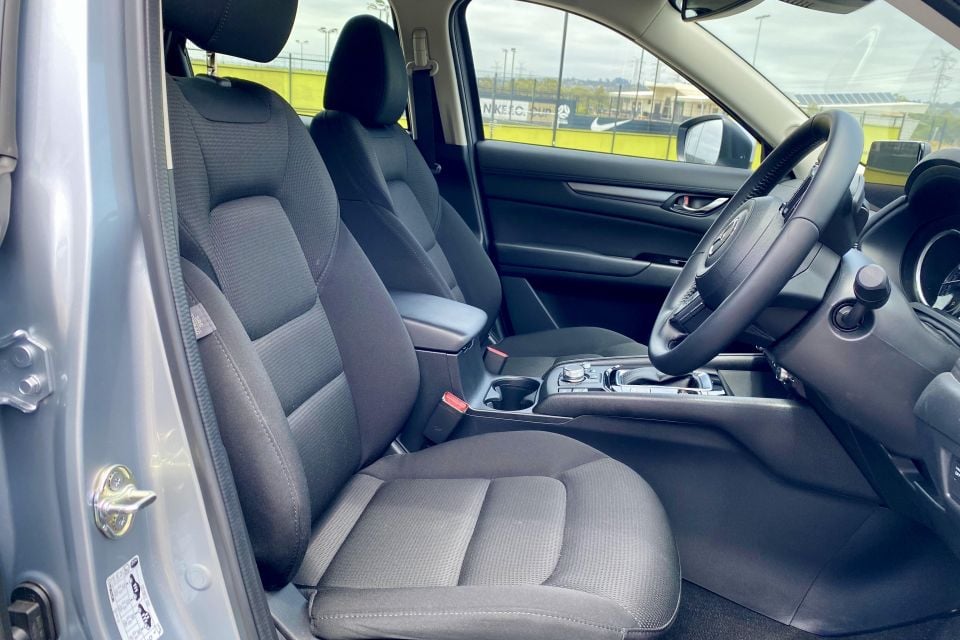
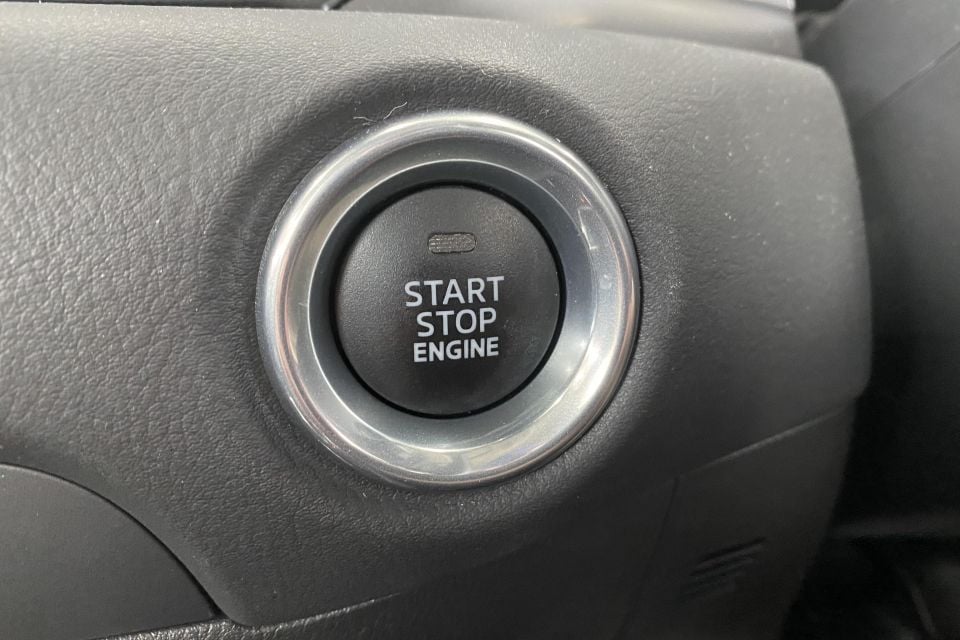
The material quality used makes a nicer first impression than most sub $40,000 competitors do – from the stitch work, damped and knurled switches, and solid silver-hued plastic inserts.
Tactile touch points are a small way to imbue a cabin with a premium feel. The various parts are very solidly put together and the backlighting is subtle.
Some soft padded materials along the transmission tunnel where your knees rest wouldn’t go astray, but other than this there isn’t much to complain about in terms of trims.
In terms of cabin storage, there are bottle-friendly door bins, a smallish centre console, tunnel-mounted cup holders, a sunglasses cubby in the roof, and a handy open section with padding under the centre stack. A Honda CR-V has more cabin storage, if you tend to accumulate clutter.
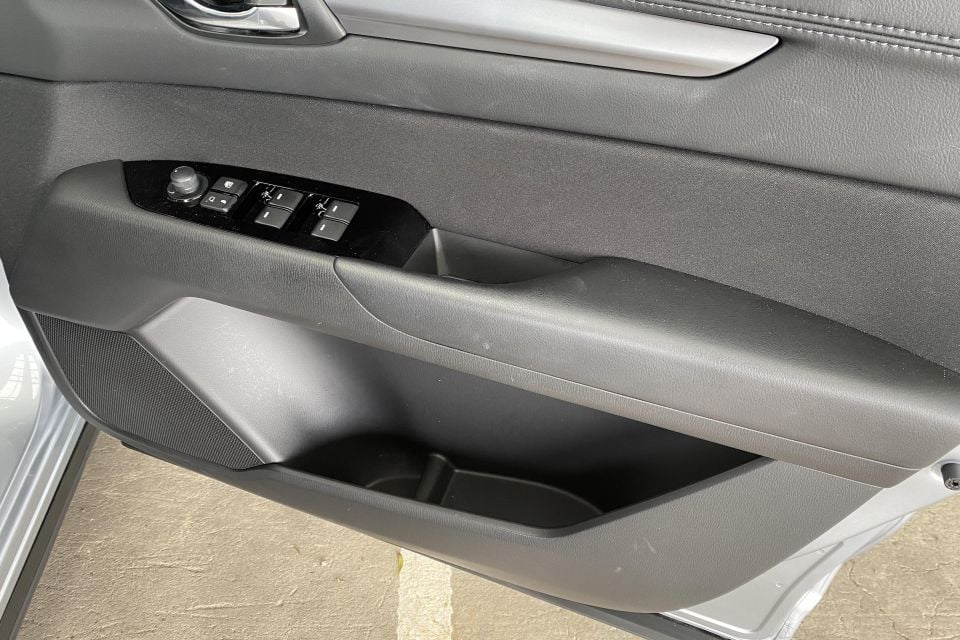
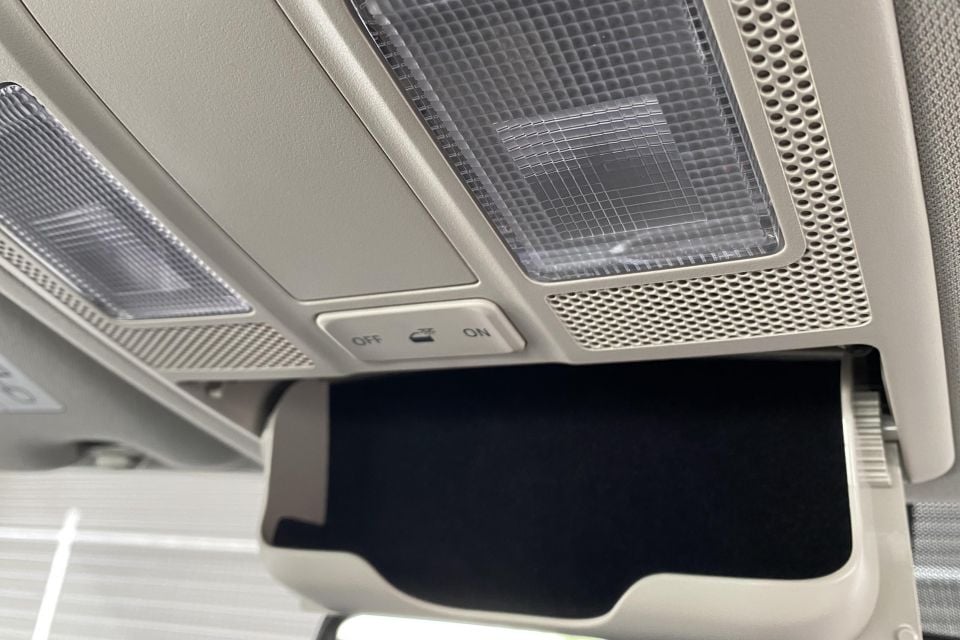
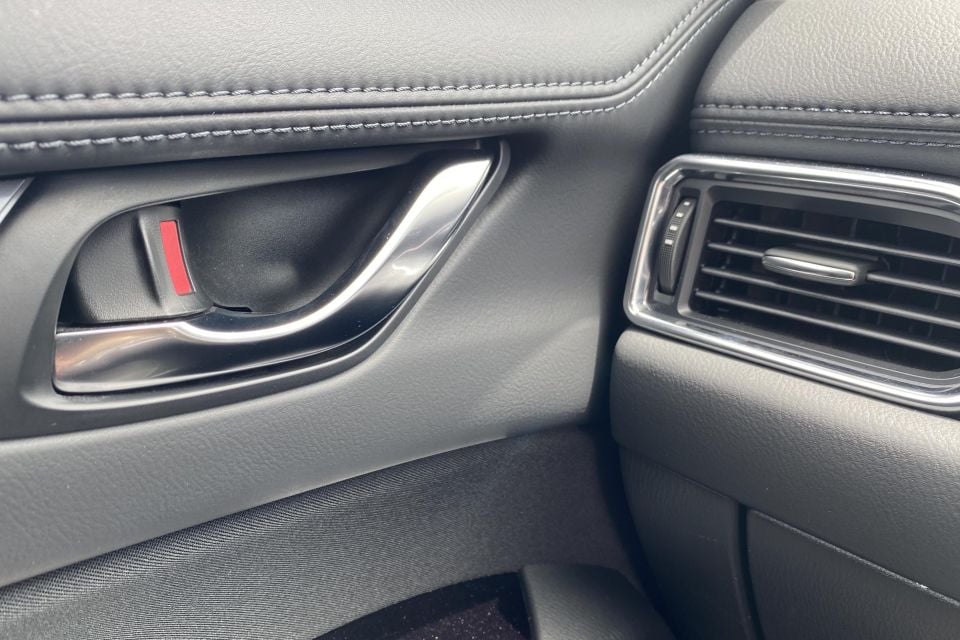
One area where the CX-5 feels tired is infotainment. Mazdas like the CX-30 get newer iteration software, but the CX-5 retains an older MZD Connect system that has rather dated graphics, and proved a little laggy and slow to load.
At idle you can use the 8.0-inch display as a touchscreen but at speed you must use the rotary dial and buttons on the tunnel, which is actually a better solution when you’re on the move.
We understand a 2021 CX-5 update will bring a new system, by the way. That’ll be most welcome.
The back seats have just-sufficient rear legroom for me (194cm tall), but excellent headroom, lots of rear glass to help one see out, rear air vents, and two USB points situated in a pull-down armrest that also sports cupholders and a felt-lined shallow cubby.

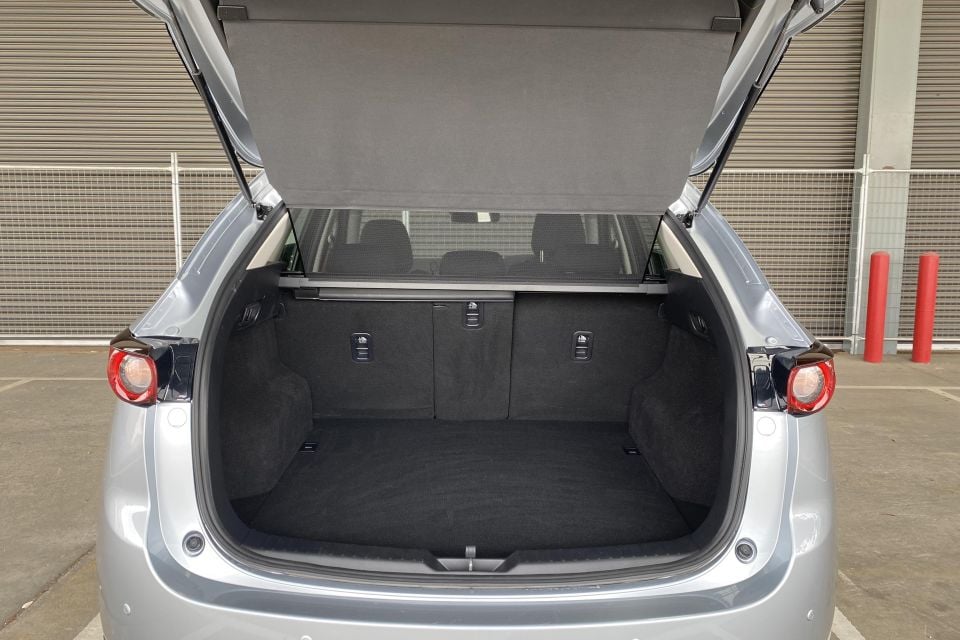
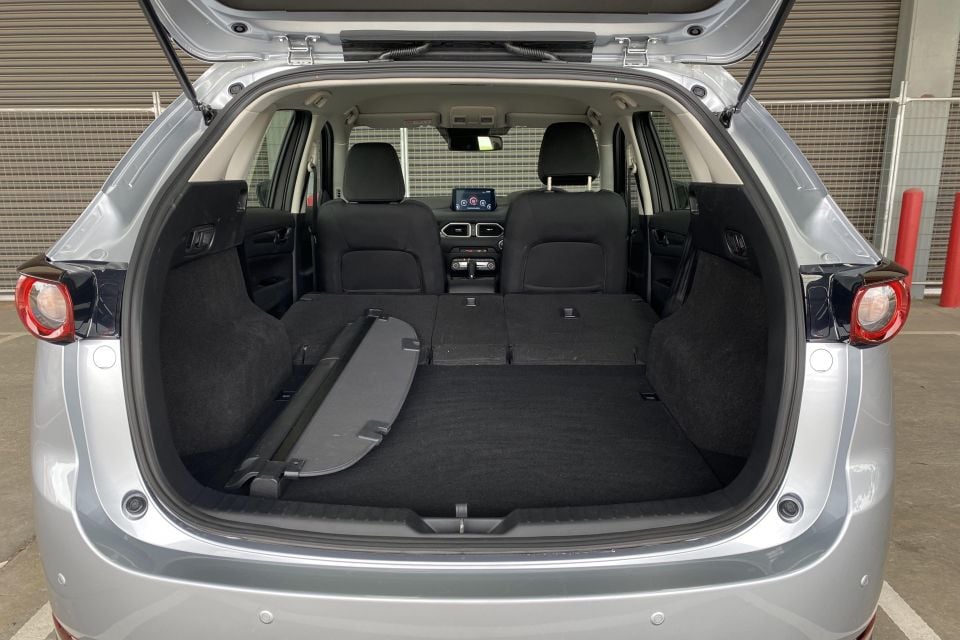
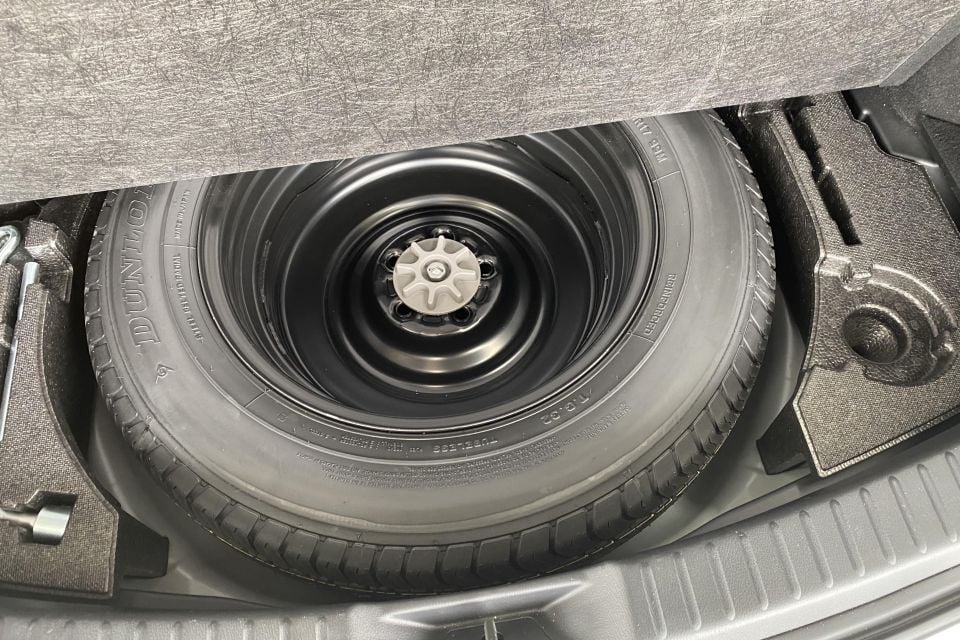
Boot space is 442L, and according to my tape measure is 1040mm wide at the wheel arches, 960mm long from lip to rear-seat backrest, and 790mm tall.
You also get a clever clip-on cargo shelf that lifts with the tailgate, and levers to flip the 40:20:40 seatback forwards, from the cargo area itself.
This split rear seat is great, because you can fold down the middle section to feed through long items while keeping the outboard seats useable.
Boot capacities of top-selling Medium SUVs:
Base CX-5 models like this one use a naturally-aspirated 2.0-litre four-cylinder petrol engine.
It makes 115kW of power at 6000rpm and 200Nm of torque at 5000rpm, and drives the front wheels only, through a six-speed torque-converter automatic transmission with built-in sports mode.
Mazda claims fuel economy of 6.9L/100km, helped along by the fitment of idle stop/start. The fuel tank stores 56L and it’ll run on 91 RON. My average 0-100km/h time was 10.6 seconds.
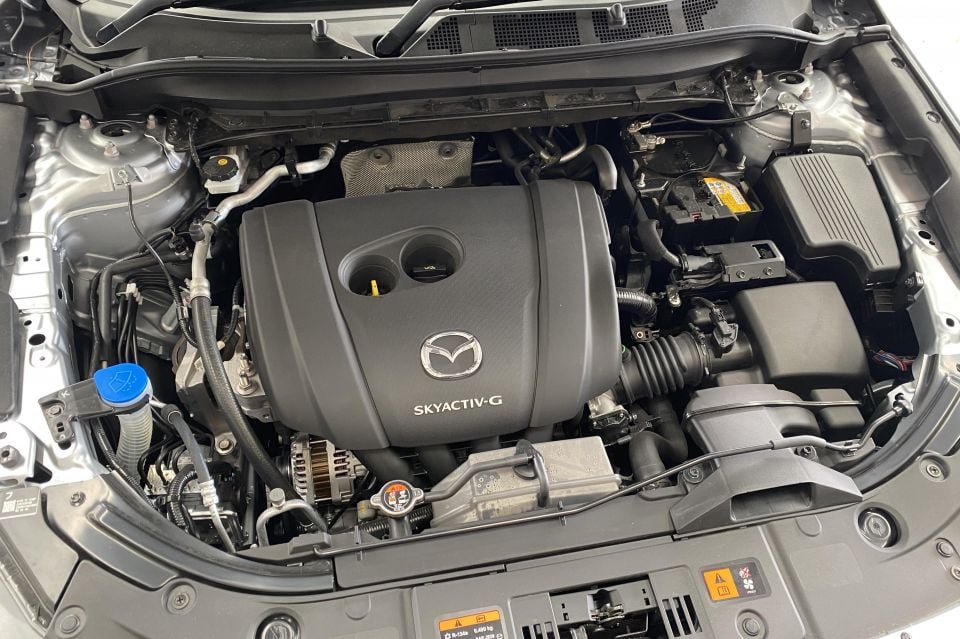
This is honestly a little underpowered by class standards. For example, the aforementioned Ford Escape has a turbocharged petrol as standard that makes 183kW and 387Nm.
If you like the CX-5 Maxx Sport but want more grunt, you can get this exact car with AWD and a 140W/252Nm 2.5-litre petrol engine for a further $3000, or a potent 140kW/450Nm twin-turbo diesel for an extra $6000. Higher-spec grades of the CX-5 can also be ordered with a 170kW/420Nm 2.5-litre turbocharged petrol engine.
You can’t say Mazda doesn’t offer choice.

The Mazda’s 2.0-litre petrol engine has a nice raspy note and loves revs, which lends character.
But it’s a little underdone, requiring you to thrash it if you want to really get somewhere in a hurry. I can’t imagine it’d love towing its maximum capacity of 1800kg with a load of passengers.
For highway cruising it’s fine though, and while it needs some winding up, it’s also peppy and immediately responsive enough to keep up with traffic and dart into a gap. The issue is, the CX-5 is a premium product and this engine isn’t.
The six-speed transmission is usually quite smooth, and in Sports mode it aggressively flares the revs on downshifts, though refinement is undermined when it has to shuffle backwards up hills.
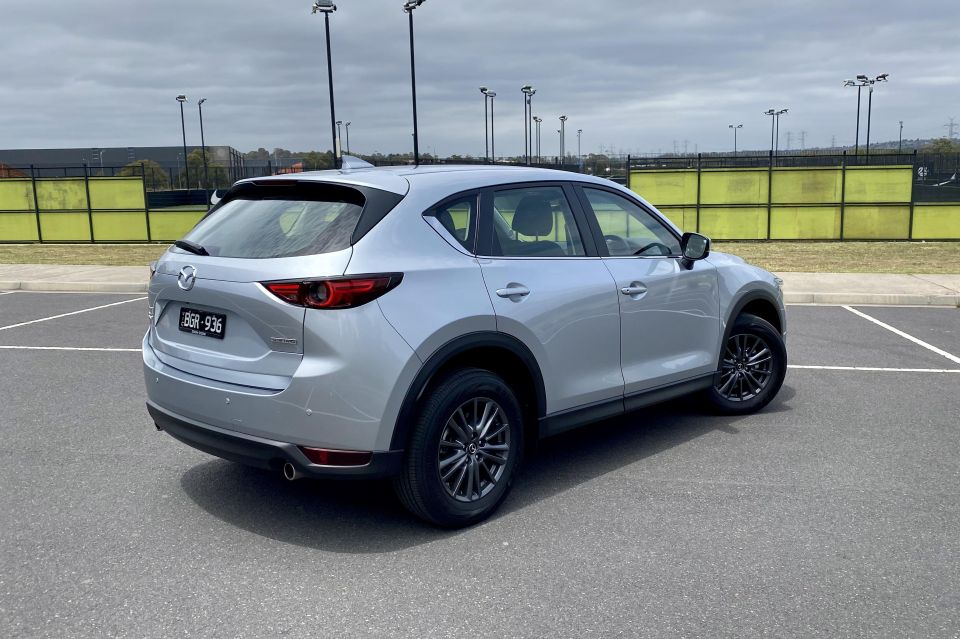
Mazda has a system called G-Vectoring, which can cleverly cut engine torque delivery to the wheels to transfer the car’s weight and tighten your lines. It’s hard to feel, but does improve stability by increments.
It remains one of the dynamic benchmarks in the class, and not just in terms of its quietude and refinement.
There’s more steering weight and feel (but also some kickback), and it inspires a little more confidence during aggressive cornering.
It’s also quieter over sharp hits like speed bumps, and has a slightly smoother ride quality that isolates you nicely.
| CX-5 Maxx Sport | |
|---|---|
| Front suspension | MacPherson strut |
| Rear suspension | Multi-link |
| Front brakes | Ventilated discs |
| Rear brakes | Solid discs |
| Kerbweight | 1559kg |
| Payload | 466kg |
| Turning circle | 11 metres |
| Ground clearance | 193mm |

If you’re interested in driving one of these yourself, you can organise a test drive via the Mazda website. Alternatively you can head down to your local Mazda dealer to organise one.
Mazda’s standard warranty covers five years and unlimited kilometres. So if you do more than the average mileage (15,000km per year) then you’ll be particularly well suited.
Intervals are 12 months or 10,000km, meaning you’re likely to need to return to the dealer or mechanic with more regularity if you cover a lot of miles annually.
The first five visits cost $330, $360, $330, $360, and $330, plus $80 every 40,000km for a new cabin air filter and $71 every two years for new brake fluid.

For a family SUV nudging $40,000, this Mazda CX-5 Maxx Sport offers a desirable design inside and out, premium materials, good noise suppression and ride comfort, and plenty of safety features.
It also has a pretty uninspiring base engine, a smaller boot that many rivals, dated infotainment, and shorter servicing intervals than we’d like.
It’s easy to see why so many people love this car, but just be sure to balance its pros and its cons. If I were looking to buy a CX-5, I’d try to budget for the bigger engine and AWD combination.
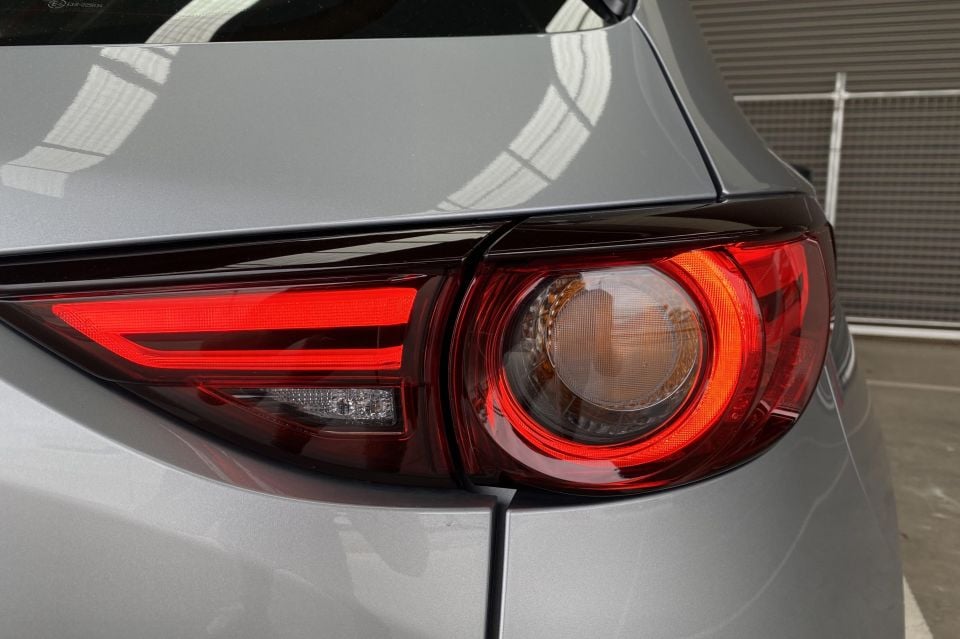
Where expert car reviews meet expert car buying – CarExpert gives you trusted advice, personalised service and real savings on your next new car.
Click the images for the full gallery
MORE: Mazda CX-5 news and reviews MORE: Mazda news and reviews
Where expert car reviews meet expert car buying – CarExpert gives you trusted advice, personalised service and real savings on your next new car.


Josh Nevett
2 Days Ago


Josh Nevett
4 Days Ago
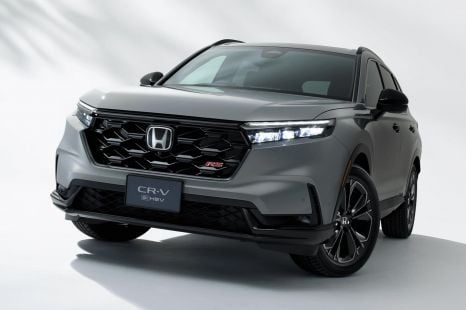

James Wong
6 Days Ago


Derek Fung
6 Days Ago


CarExpert.com.au
9 Days Ago
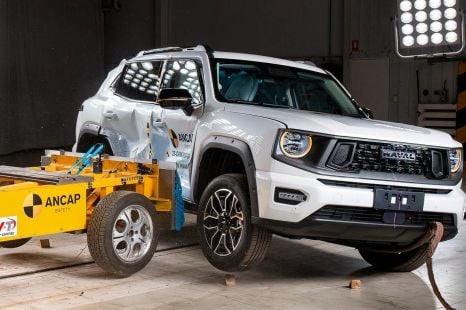

James Wong
9 Days Ago